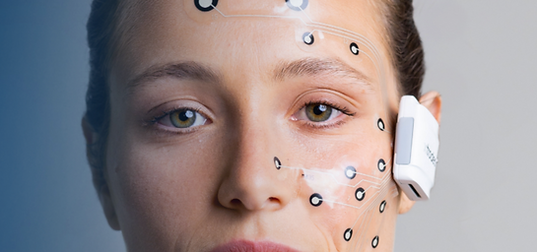Our
Projects
Research in the lab concerns the development, characterization, and testing of soft neural interfaces, both for invasive (primarily the retina) and non-invasive electrophysiological applications.
Funding is currently available through:
ERC, ISF, Israeli MOS, and the DFG.
Funding: ERC Advanced (2023-2028)
The main goal of this project is to develop new tools for the study of the intact retina. In particular: (1) a Bi-directional electrophysiological interface which can record and stimulate the intact retina (in the eye) and; (2) Soft multi-electrode arrays for non-invasive stimulation of the retina (soft trans-orbital electrodes) will be explored. We will use these tools to study the retina in its intact form (in animal models) and we will implement the gained know-how in humans to study non-invasive stimulation of the retina. Intra- or trans-orbital electrical recording and stimulation will be used to electrically activate the retina, consequently, suitable stimulation conditions can be reached.

Printed Dry Electrodes for High-Fidelity EEG, EMG
Funding: DFG. With Gerardo Hernandez-Sosa (KIT, Germany)
Abstract: In this proposed project, we aim to realize truly lightweight, wireless, dry, and soft-skin electronic technology. We will integrate various sensing modalities without increasing weight and size. We will focus on two major joint tasks: (1) optimizing printing processes on flexible and extremely soft materials to yield dry electrodes that can easily conform to the human skin while supporting the integration of discrete electronic components (2) translating the laboratory scale research into easy-to-use low-cost technologies, compatible by industry relevant printing techniques.
Publications:
- Printed soft skin electrodes for seamless bio-impedance measurements (Link)

Soft printed high-resolution neuronal interfaces
Funding: ISF (2023-2027)
In this study, we will utilize carbon printing on soft materials to achieve unprecedented smaller and softer devices with high electrode density. The low mechanical compliance of these devices will allow us to achieve rapid device anchoring to neural tissues using different bio-adhesive materials. These devices will be characterized and investigated for their recording and stimulation efficacy, as well as their stability and biocompatibility. At the final stage of this research, we intend to test our new implants in vivo to validate their efficacy and biocompatibility.
Publications:
- Bi-directional electrical recording and stimulation of the intact retina (Link)




